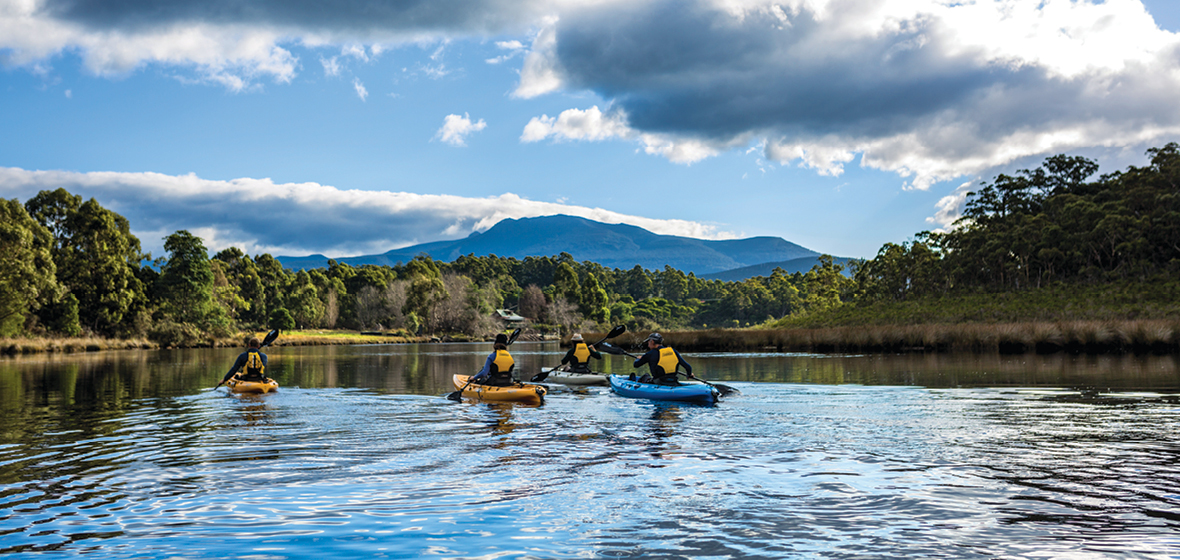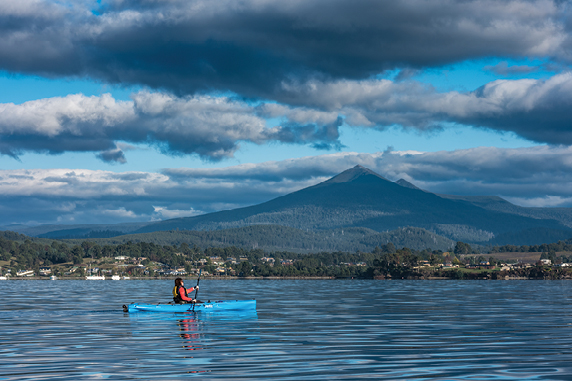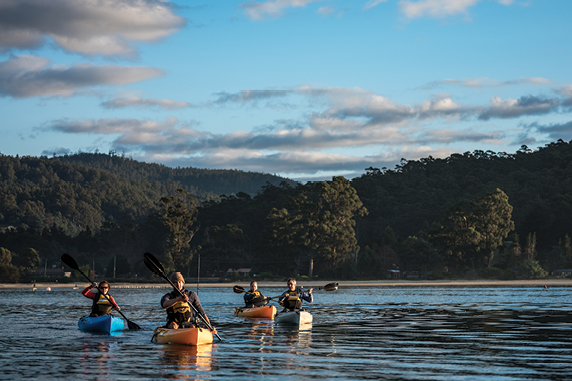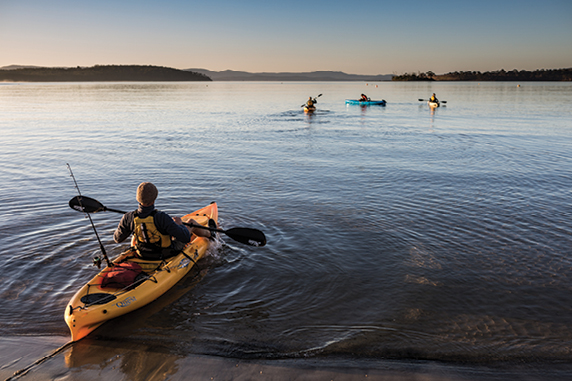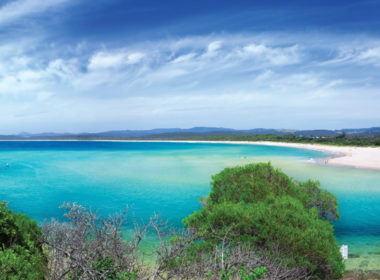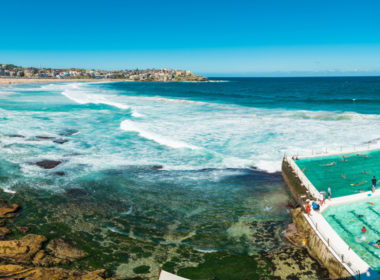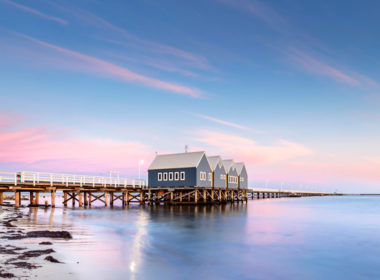It’s a year for exploring our own backyards and southern Tasmania is overflowing with adventure. We launch in from the hull of a guided kayak.
The black swans are ignoring us. They must hear the splash of our paddles through the water, but they drift along unconcerned, even as we slowly draw closer. I count five, six, seven of them, drifting past tall stands of reeds, unperturbed by the four kayakers that are overtaking them.
Seeing the swans brings home just how far we’ve travelled in a short time. When we started our kayak just 30 minutes ago upriver, the landscape was very different. Upstream, the Lune River is so narrow and shallow, it’s more of a creek. The waters – still bearing the chill of their source high in the snow-topped mountains – are stained dark with the tannins of trees that crowd close along each bank.
Things look very different where we are now. The river is wide enough – if not deep enough – for boats to pass each other, the waters are an uncomplicated blue, and the stringybarks, blue gums and river gums soar higher than ever.
“It’s one of the things I love about this trip, the different environments you go through,” says Matt Wardell, the founder of Esperance Adventures. “Where we started, the water is fresh enough to drink. By the time we finish, we’ll be paddling on pure salt water.”
Wardell has spent countless hours exploring the many waterways of the Huon River in southern Tasmania, and has mapped out a range of day routes that showcase the area’s many different sides.
“There is so much wild scenery here. You can really get a good sense for how things looked when the first white settlers arrived, or even earlier. In some places you imagine things haven’t changed for tens of thousands of years.”
That’s certainly true of our paddle down the Lune River. We are just 90 minutes from Hobart, 30 minutes from the lively Huon Valley township of Geeveston, yet on our paddle we see hardly any signs of civilisation. Only some old pilings and the remnants of a steam boiler indicate that this area once had a flourishing timber industry.
“Back in those days, the rivers were like highways. They were the only way to penetrate into the interior; from here, barges would take the logs down to the bay where they could be loaded directly onto ocean-going ships,” Wardell explains.
The Lune River trip is just one of the routes that Wardell offers his guests. He also takes visitors paddling around the islands of Port Esperance – “the backdrop of rolling hills and orchards, with the mountains behind, is just stunning” – and exploring the many delights of Recherche Bay.
“There’s a lot of history here – French explorer D’Entrecasteaux came here and had a lot of interaction with the local Lylequonny people – they were both really intrigued with each other. Then there were big whaling and sealing settlements which were home to a thousand people or more, and then coaling and convict settlements as well.”
The panorama in front of me is pretty gorgeous too. There are wild oysters growing on submerged rocks, almost within my grasp, and an ever-changing array of wildlife – the swans have now been replaced by a cormorant resting on the limb of a semi-submerged tree. “Keep an eye on the water too,” Wardell urges. “Where the water gets brinier, we sometimes see stingrays.”
A pair of soaring sea eagles is the first sign that we’re nearing the end of our journey; not long after, we round a bend and see the wide river mouth and the tranquil bay beyond.
Once we pass out of the river, things change quickly. The water tugs more eagerly at our kayaks, motorboats speed past, and there’s a colourful collection of houses on the far side of the bay that marks our end point. We’ve only been paddling for a couple of hours but after our immersion in the wild, the sight of civilisation comes as something of a shock.
Wardell smiles at our mild disorientation and reminds us that wilderness is still within reach.
“Look at that water,” he says, pointing past the bay to where the open ocean waits. “Once you’re out there you’re in the Southern Ocean. Those waves roll out all the way to Antarctica. They’re heading towards the ice caps.”
We gaze at the water connecting the two wildernesses and marvel at how even in the middle of nowhere, you are always connected to somewhere else.
CHECKLIST
Get there: Esperance Adventures’ Lune River Kayak Tour leaves from Southport in southern Tasmania, about a 1.5-hour drive south of Hobart. Tours host between 2 – 6 guests and run in the morning and at sunset.
Paddle Prices: The Lune River Kayak Tour costs $148 per person including morning tea and lunch. esperanceadventures.com.au

